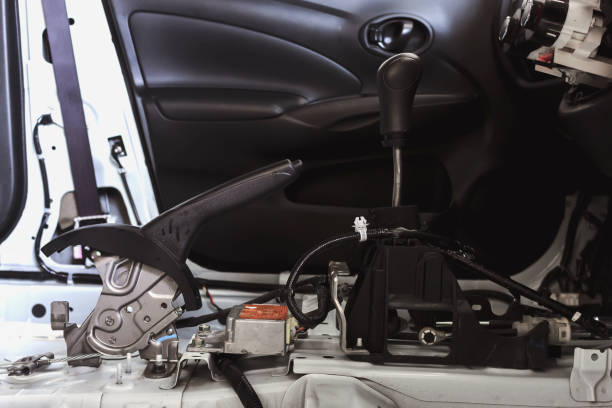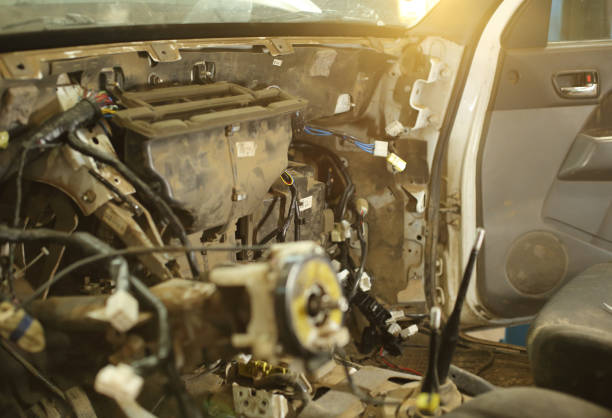Harnessing the Full Potential of Stage 2 Remapping is popular among car enthusiasts. Offering more than just a boost in horsepower, this advanced tuning method opens the door to a thrilling driving experience. If you’re considering Stage 2 remapping, it’s important to understand what it entails, its benefits, and the steps involved to ensure a successful upgrade.
What is Stage 2 Remapping?

Stage 2 remapping is a tailored process that adjusts the engine control unit (ECU) to unlock additional performance. Unlike Stage 1 remapping, which typically focuses on improving efficiency and mild power gains, Stage 2 takes things further. It requires hardware upgrades, such as high-flow exhausts, performance air filters, or even upgraded turbochargers, to support the enhanced engine output.
Key Features of Stage 2 Remapping
- Customized ECU Mapping: The software is fine-tuned to maximize power and torque based on your vehicle’s specific modifications.
- Improved Throttle Response: Acceleration becomes sharper, providing a more dynamic driving experience.
- Enhanced Turbo Performance: Turbocharged vehicles benefit significantly, with reduced lag and greater boost.
The Benefits of Stage 2 Remapping
Stage 2 remapping offers a host of advantages for those seeking to elevate their driving experience. Here are some of the key benefits:
1. Increased Power and Torque
The most notable benefit of Stage 2 remapping is the significant boost in horsepower and torque. This translates to faster acceleration and improved overall performance, making your car more responsive and enjoyable to drive.
2. Optimized Fuel Efficiency
While power gains are the primary focus, Stage 2 remapping can also improve fuel efficiency under specific driving conditions. By optimizing the air-to-fuel ratio, the engine operates more efficiently, which can result in fuel savings during steady driving.
3. Enhanced Driving Dynamics
Stage 2 remapping refines throttle response, reduces turbo lag, and delivers a smoother power curve. This combination ensures a more engaging and exhilarating driving experience, whether you’re cruising on the motorway or tackling twisty back roads.
4. Tailored Performance
With Stage 2 remapping, your vehicle’s performance is tailored to your preferences and driving style. Professional tuners can adjust parameters to deliver the exact driving characteristics you desire.
Hardware Requirements for Stage 2 Remapping
Unlike Stage 1 remapping, Stage 2 requires supporting modifications to ensure the engine can handle the increased performance. These upgrades may include:
- High-Flow Exhaust System: Reduces back pressure and improves airflow, allowing the engine to perform more efficiently.
- Performance Air Intake: Ensures a steady supply of cool, dense air to the engine for optimal combustion.
- Upgraded Intercooler: Essential for turbocharged engines, it helps maintain lower intake temperatures and prevents power loss.
- Enhanced Turbochargers: In some cases, an upgraded turbocharger may be necessary to achieve desired performance levels.
- Stronger Clutch: The additional power and torque can strain the stock clutch, so an upgraded clutch may be required to handle the load.
The Stage 2 Remapping Process
The process of Stage 2 remapping involves several critical steps to ensure a successful outcome. Here’s what you can expect:
Step 1: Initial Consultation
Before any work begins, a professional tuner will assess your vehicle and discuss your performance goals. This step is crucial to determine whether Stage 2 remapping is suitable for your car and driving needs.
Step 2: Pre-Remapping Diagnostics
A thorough diagnostic check is performed to ensure the vehicle is in good condition and free from underlying issues. Any existing problems must be addressed before proceeding with the remapping.
Step 3: Hardware Installation
The necessary hardware upgrades are installed, such as the exhaust system, air intake, or intercooler. These components are essential to support the enhanced engine output.
Step 4: Custom ECU Mapping
Using specialized software, the tuner adjusts the ECU settings to optimize performance based on the new hardware and your preferences. This step involves fine-tuning various parameters, such as boost pressure, fuel delivery, and ignition timing.
Step 5: Testing and Validation
Once the remapping is complete, the vehicle undergoes extensive testing to ensure everything operates smoothly and reliably. This includes on-road tests and, in some cases, dyno runs to measure power output and validate the results.
Potential Risks and Considerations
While Stage 2 remapping offers numerous benefits, it’s important to be aware of potential risks and considerations:
1. Increased Wear and Tear
The added power can put extra strain on the engine, transmission, and other components. Regular maintenance and high-quality fluids are essential to mitigate this risk.
2. Impact on Warranty
In many cases, Stage 2 remapping can void the manufacturer’s warranty. It’s advisable to check your warranty terms before proceeding.
3. Legal Compliance
Ensure that your modifications comply with local regulations. Some jurisdictions have strict emissions standards that Stage 2 upgrades may not meet.
4. Insurance Implications
Performance modifications can affect your insurance premiums. Inform your insurer about the remapping to avoid complications in the event of a claim.
Choosing the Right Tuner

Selecting a reputable tuner is crucial for a successful Stage 2 remapping experience. Here are some tips to help you find the right professional:
1. Research and Reviews
Look for tuners with a proven track record and positive customer reviews. Check forums, social media, and specialized websites for recommendations.
2. Experience and Expertise
Choose a tuner with extensive experience in remapping your specific vehicle’s make and model. This ensures they have the knowledge to deliver optimal results.
3. Transparent Pricing
A trustworthy tuner will provide clear pricing for both the remapping service and any required hardware upgrades. Avoid tuners who offer vague or overly low quotes, as this could indicate subpar work.
4. Warranty and Support
Reputable tuners often offer a warranty on their work, giving you peace of mind in case any issues arise after the remapping.
Is Stage 2 Remapping Right for You?
Stage 2 remapping is ideal for drivers who want to take their vehicle’s performance to the next level. However, it’s not suitable for everyone. Consider the following factors:
- Your Driving Habits: If you primarily use your vehicle for commuting or city driving, Stage 2 remapping may be excessive.
- Budget: The cost of hardware upgrades and professional tuning can be significant. Ensure you’re prepared for the investment.
- Long-Term Goals: If you plan to keep your vehicle for many years, the added wear and tear should be factored into your decision.
Conclusion
Stage 2 remapping offers a thrilling way to unlock your vehicle’s full potential, delivering increased power, improved dynamics, and a more engaging driving experience. By understanding the process, investing in the necessary hardware, and choosing a reputable tuner, you can enjoy the benefits of Stage 2 remapping with confidence. Whether you’re a performance enthusiast or simply want to enhance your car’s capabilities, this advanced tuning option is a powerful way to transform your driving experience.
